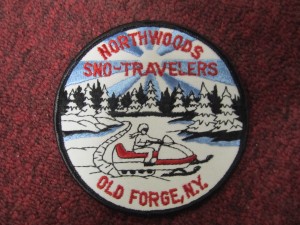 Inlet was home to the area’s first dealership thanks to Ted and Bob Harwood
Inlet was home to the area’s first dealership thanks to Ted and Bob Harwood
The beginning of snowmobiling in the Inlet/Old Forge area can be traced back to the winter of 1959 to 1960 when Ted and Bob Harwood opened a Husky dealership at their Inlet service garage.
Though snowmobiling was yet to be proven a popular sport, the brothers made the investment after talking with a chainsaw company representative they were doing business with who had opened a Husky dealership of his own.
The Canadian-made Husky sleds were two-piece machines. Riders sat on a little frame with runners on the back, and the engine and tracks were on the front part of the machine, Ted said.
The machines cost $500 to $700 and in their first year the Harwoods sold fewer than a dozen.
But they had no regrets as the local demand increased the next couple of years. The snowmobiles were found to come in handy during emergency situations. The Harwoods used the sleds to reach people whose vehicles had broken down, or to get to those who didn’t have their roads plowed in the winter.
“For example, I remember one guy from Little Moose Lake who hired us to go in by snowmobile to repair his government surplus vehicle that he couldn’t get to run,” Ted said.
Sled sales at the time were primarily to local folks, according to Ted.
Some contractors bought the sleds to get into camps they were caretaking in the winter. But the snowmobile was soon considered a “salvation” for people who needed to get out for groceries, etc. during intense weather conditions—particularly one winter in the early ’60s when there was such an extreme snowfall that snowplows couldn’t even operate.
Then, when people began to discover how fun the machines were to ride, they started doing it recreationally as well.
Ted and his wife were among the founders of the first snowmobile club, the Northwoods Sno-Travelers, which gained a rapid membership.
The late Dave Hollister, Barney Barnum, and Ted and Bob were among the early presidents of the club. Members of the club built lean-tos and shelters for cookouts that were enjoyed during snowmobile outings.
According to Ted, it was common to go out in the evenings and Sunday afternoons—often with two or three other couples—to ride for a few hours and to grill steaks at a cookout shelter.
It was typical to have 25 people gather for an outing on a good day.
The Sno-Travelers also leased a hunting camp on International Paper Company property near Stillwater and used it for day trips as well as rustic overnights.
Cascade Lake and a trail from Moss Lake to Becker’s Hotel on the Fulton Chain were popular destinations. Club members used to ride over the old railroad bed to Carter Station as well. Much has changed since the early days of snowmobiling.
Back then, snowmobiles had license plates, and it was okay to ride on main roads, right along with automobile traffic, Ted said.
Today, not only are snowmobiles barred from roads, but much state land is off-limits to motorized vehicles.
“In terms of the machines themselves, snowmobiles have become so much more powerful, with possible speeds going ‘out of sight.’ In the early days, they had 7 to 8 horsepower engines and would only travel 15 to 20 mph.
The machines haven’t gotten any bigger, just the engines have grown in size and power,” Ted said.
The greatest safety concern in the early days—as it is today— was knowing where the inlets to water bodies were and avoiding them, plus staying off the lakes until they were frozen well enough.
Ted Harwood has video footage of the early Northwoods Sno-Travelers’ snowmobile outings and is willing to make copies available to interested parties. To request a copy, email Ted at: tedharw@netzero.net.
